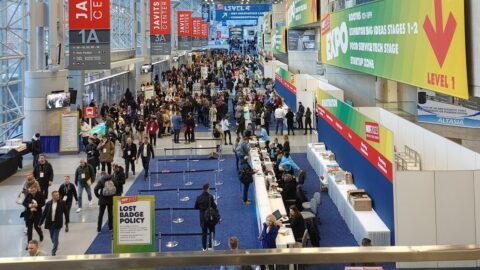As the powers of mobile, social and web continue to develop, retailers must implement compelling multimedia elements such as photos, video and blogging to excel in the space. The luxury retail market in particular has provided optimal examples of branding and multichannel engagement. By creating a unique, elite experience, luxury retailers such as Neiman Marcus and Nordstrom, and upscale manufacturers such as Burberry and Gucci, have successfully utilized social, mobile and web elements to engage consumers and formulate long-lasting relationships with their shoppers.
To provide insight on the thriving luxury market, the e-tailing group recently released its “Inaugural Luxury Mystery Shopping Study” and “Luxury Customer Experience Index.” In a survey of 1,000 shoppers during September 2011, the consultancy investigated consumer response to web, social and other multimedia experiences. “The convergence of technology, from mobile to social trends, may ultimately be the most important factor connecting consumers to the brands they covet,” the report revealed.
For the study, the e-tailing group analyzed 12 luxury brand manufacturers and eight retailers based on factors including overall brand engagement, shopping efficiencies, customer service and merchandising tactics. Lauren Freedman, President of the e-tailing group, revealed key insights and findings from the study and what retailers can learn from luxury brands and department stores.
Retail TouchPoints: Based on your analysis from a variety of outside sources for the e-tailing group’s “Inaugural Luxury Mystery Shopping Study” and “Luxury Customer Experience Index,” can you provide an outline of the general browsing and buying behaviors of today’s luxury shoppers?
Lauren Freedman: Affluent consumers have embraced technology and associated devices to where tablets and social access via Facebook now are part and parcel to daily media consumption. Industry research shows that while less than 50% of affluent shoppers actually make purchases on luxury sites, the browse factor is entrenched as more than half of wealthy customers are visiting fashion web sites to browse, shop or check out the latest designers. In fact, a large portion of luxury shoppers say the convenience of e-Commerce has led them to spend less time shopping in stores.
RTP: The study revealed that overall, luxury brand retailers such as Bloomingdale’s and Barneys excelled in an overall online experience versus upscale manufacturers such as Gucci and Burberry. Can you explain this?
LF: Luxury retailers are beginning to realize the requirements for a comprehensive on-site selling experience and continue to elevate it, while brand manufacturers face a steeper learning and selling curve, focusing their energies more on the “brand” experience.
While luxury retailers do a better job of presenting the “whole package,” both brand manufacturers and retailers in the market must work to create a complete online shopping experience. For example, despite the encouraging results for those at the top of our “Luxury Customer Experience Index,” it is interesting to note that only two sellers in our study achieved a score of 80-plus, with 83 as the highest score on the 100-point scale. These 80-plus results are modest compared to our more established “e-tailing group 100 web sites” (EG100 index), where 10 sites achieved a score of 80-plus, with 88 points attained by the highest scoring merchant.
RTP: There is a noted increase in video/audio usage across channels, especially in blogs. How do you think this allows luxury manufacturers and retailers to connect with their audiences? What do you believe makes a “successful” video marketing strategy?
LF: Video is used extensively (95%) by luxury merchants. A “successful” video marketing strategy is one that engages the shopper and reinforces the brand image and persona. In addition, our research shows that a category page and product page presence dominates, where retailers exploit video’s ability to drive conversion. This will become increasingly relevant as we see a greater penetration of “shoppable” videos where item details can be perused directly from the video content.
RTP: The “Luxury Mystery Shopping Study” reinforces the importance of tapping into multimedia strategies. How can retailers across markets learn from these luxury brands/retailers to create a richer, more engaging experience across mobile, social and e-Commerce sites?
LF: A few tips retailers can implement into their cross-channel strategies include:
1. Take advantage of a captive audience by enhancing product pages with relevant recommendations that will inspire target customers to increase buying likelihood;
2. Incorporate tools that give customers the ability to “touch and feel” the product;
3. Advance the customer relationship (and sales!) by including and encouraging product ratings/reviews;
4. Deliver tools that will encourage social engagement such as sharing options, links to Facebook and Twitter, and the Facebook “Like” and Google+ “+1” buttons; and
5. Utilize video as an extension of selling products and bringing them to life for consumers.
RTP: Social shopping has increased significantly in the last year, based on the e-tailing group’s research. Four percent of the e-tailing 100 participated in social shopping during Q4 2010. During Q3 2011, participation boosted to 15%. How do you anticipate social shopping will develop in the coming year? Furthermore, what makes combining social and commerce a logical investment for retailers?
LF: Social engagers encourage shoppers to forge a lasting relationship with the brand. Very early results from our current “Q4 2011 Mystery Shopping Study” show that more merchants are integrating some form of shopping functionality into their Facebook pages. While from a revenue-generating standpoint they may not be the most lucrative right now, content-rich Facebook pages have become another channel replete with merchandising, promotions and customer engagers such as video and discussion boards. Enter the age of F-Commerce: From a shopping perspective, merchant Facebook pages enable customers to interact with the brand, become involved and informed, and shop directly from a Facebook storefront without being redirected to the main e-Commerce site.
RTP: Which luxury retailers excelled in cross-channel engagement and communication strategies this year? Moreover, what can merchants across markets learn from these retailers’ strategies and techniques?
LF: Nordstrom artfully supports a very active social community on Facebook and also encourages engagement on its site with a blog and multiple sharing options. This is leveraged not only to lure online shoppers but to drive foot traffic to its brick-and-mortar locations. Cross-channel efforts are further enhanced with a sophisticated store locator and “shoppable” catalogs.
Finally, Nordstrom is a master of merchandising up-to-the-minute trends and hot designers in a creative way, using relevant search options to help shoppers find them and enhanced product pages to sell them.
Taking a page from Nordstrom’s book, merchants must avoid siloed online efforts by providing lots of visual “wow” and branded content and backing it up with innovative merchandising, sophisticated search options and robust product pages that sell the merchandise.
Lauren Freedman is a 15-year veteran in the e-Commerce field. She founded the e-tailing group in 1993 after an extensive career as a department/specialty store buyer. Under her guidance the e-tailing group has evolved as one of the premier e-Commerce consultancies. In 2001 Freedman authored her first book, It’s Just Shopping, which provides a comprehensive, behind-the-scenes look at the evolution of multichannel selling. She is a frequent speaker at conferences such as Shop.org, eTail and Internet Retailer, and is a go-to-resource for media outlets including The New York Times, WWD, CNN, Financial Times, USAToday, Business Week, Forbes, Internet Retailer and Crains.












